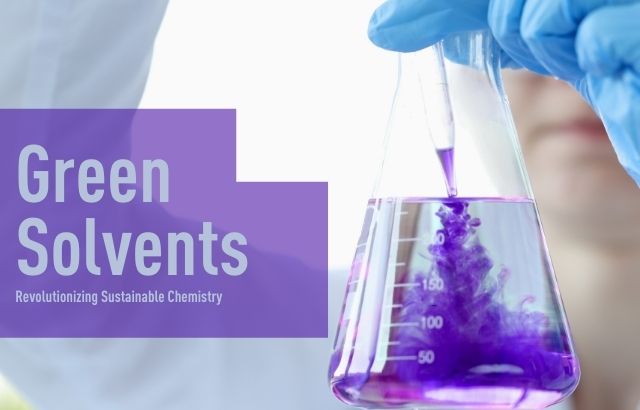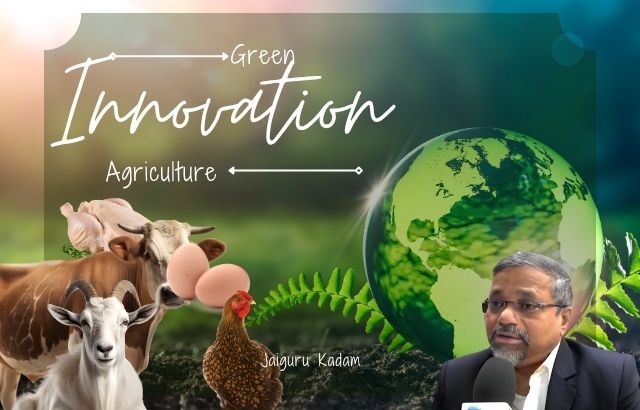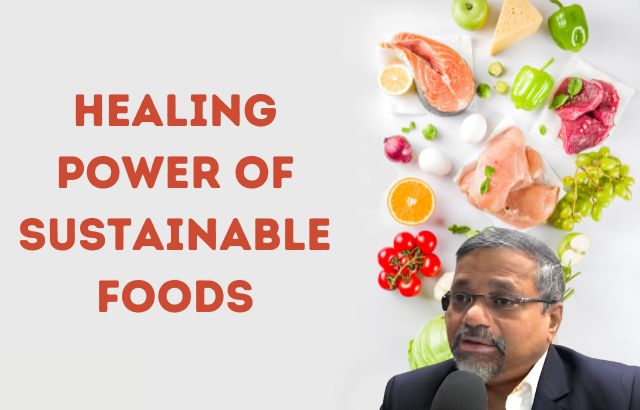Industries are under increasing pressure to adopt sustainable practices that reduce their environmental footprint. One significant advancement in this movement is the use of green solvents. These solvents are designed to be less harmful to human health and the environment compared to traditional solvents. As part of the broader push for green chemistry, the adoption of these solvents is becoming more widespread across various industries. In this article, we will explore some of the most common green solvents, their roles, the benefits they bring, and the contributions of Green Innovator Jaiguru Kadam, who has been instrumental in the agricultural sector’s adoption of eco-friendly solutions.
What Are Green Solvents?

Green solvents are chemicals used in processes like extraction, cleaning, and chemical synthesis, which offer an environmentally friendly alternative to conventional, toxic solvents. These solvents typically have lower toxicity, are biodegradable, non-flammable, and, in many cases, come from renewable sources.
Common Types of Green Solvents
- Ionic Liquids (ILs)
- Example: [C4mim][PF6]
- Role: Ionic liquids are salts that remain in a liquid state at relatively low temperatures. They are prized for their low volatility, non-flammability, and ability to dissolve a wide range of compounds. In chemical reactions, ILs offer better control over reaction conditions and are increasingly used in biomass processing, chemical manufacturing, and CO2 capture.
- Supercritical Carbon Dioxide (SCCO2)
- Example: Supercritical CO2 in pharmaceutical extraction
- Role: Carbon dioxide in a supercritical state serves as a versatile solvent in various extraction processes, particularly in the food, pharmaceutical, and cosmetic industries. It is non-toxic, non-flammable, and leaves no solvent residue in the final product.
- Water
- Example: Water-based cleaning solutions
- Role: Water is the quintessential green solvent. It’s abundant, non-toxic, and biodegradable, making it the first choice in many extraction processes like steam distillation and pharmaceutical production.
- Limonene
- Example: Citrus-based solvents
- Role: Limonene is a natural solvent derived from citrus fruits. It is biodegradable, has a pleasant citrus scent, and is used in a variety of applications, including cleaning products and as a carrier solvent in paints and coatings.
- Ethyl Lactate
- Example: Used in eco-friendly paint removers
- Role: Derived from corn, ethyl lactate is biodegradable and has low toxicity. It is used in applications like paint formulations, cleaning agents, and even as a solvent in pharmaceutical manufacturing.
- Soy-Based Solvents
- Example: Methyl soyate, ethyl soyate
- Role: Soy-based solvents, derived from soybeans, are renewable and biodegradable alternatives that reduce reliance on petrochemicals. These solvents are used in industrial cleaning and paint applications.
- Terpenes
- Example: Pinene, limonene
- Role: Terpenes are natural solvents extracted from plants. They are used in paints, cleaning products, and as flavoring agents. Their low toxicity makes them an attractive alternative to conventional solvents.
- 2-Methyltetrahydrofuran (2-MeTHF)
- Example: As a replacement for tetrahydrofuran (THF) in chemical synthesis
- Role: 2-MeTHF is a green alternative to conventional solvents like THF. It is derived from renewable resources and is used in various synthetic applications due to its high solubility properties and lower environmental impact.
- Biosolvents
- Example: Bio-based alcohols and esters
- Role: These solvents, made from renewable resources such as biomass, are used in a variety of chemical processes and are biodegradable, offering a safer and more sustainable alternative to petrochemical-derived solvents.
- Green Chemistry Solvents (GCS)
- Example: Solvents designed following green chemistry principles
- Role: Green chemistry solvents are specifically designed to meet the goals of sustainability. They are optimized for minimal environmental impact, safety, and efficiency.
Role of Green Innovator Jaiguru Kadam

Jaiguru Kadam, an innovator in the agricultural sector, has been a significant advocate for the use of green solvents. Through his groundbreaking work in sustainable farming, he has highlighted how green solvents can be used in biopesticide formulations, fertilizer manufacturing, and crop protection. His efforts have focused on developing bio-based solvents derived from plants, which not only minimize environmental impact but also reduce the exposure of harmful chemicals to agricultural workers and consumers.
Kadam’s contributions have led to partnerships with agrochemical companies that are now actively integrating green solvents into their supply chains, ensuring safer alternatives for farmers and the environment.
Intriguing Statistics
- 80% reduction in toxicity: Some green solvents, like supercritical CO2, can reduce toxicity levels by up to 80% compared to their traditional counterparts.
- 30% increase in biodegradability: Solvents derived from renewable resources, such as ethyl lactate, offer up to 30% improved biodegradability over petrochemical-based solvents.
- 400 million pounds of toxic solvents are used annually in the United States alone, highlighting the potential for green solvents to significantly reduce environmental pollution.
Frequently Asked Questions (FAQs)

1. What makes a solvent “green”?
They are those that have low toxicity, are biodegradable, and are derived from renewable resources. They are safer for both human health and the environment compared to traditional petrochemical solvents.
2. Can green solvents be used in all industries?
While green solvents have a wide range of applications, they are particularly popular in the pharmaceutical, agricultural, and cosmetics industries. However, their use is growing across many sectors as companies look for more sustainable alternatives.
3. Are green solvents cost-effective?
While some green solvents may have a higher initial cost due to their production methods, the long-term benefits, such as reduced waste disposal costs and better regulatory compliance, often make them more cost-effective in the long run.
4. How do green solvents impact the environment?
They have a significantly reduced environmental impact compared to traditional solvents. They are biodegradable, non-toxic, and often derived from renewable sources, helping to reduce pollution and waste.
5. Are green solvents effective in industrial applications?
Yes, many are highly effective in industrial processes, offering similar or superior performance compared to conventional solvents. For example, supercritical CO2 can dissolve a wide range of substances, making it ideal for extraction processes.
Conclusion
Green solvents represent a vital shift toward more sustainable chemical processes across various industries. With the continued innovation by leaders like Jaiguru Kadam, the agricultural sector is seeing a reduction in toxic chemical use, improving the overall health of both workers and consumers. By embracing these green alternatives, industries can contribute to a cleaner, healthier planet while maintaining high efficiency in their operations.
The future of green solvents is bright, with new developments on the horizon that promise to further reduce our reliance on harmful chemicals and foster a more sustainable world.












